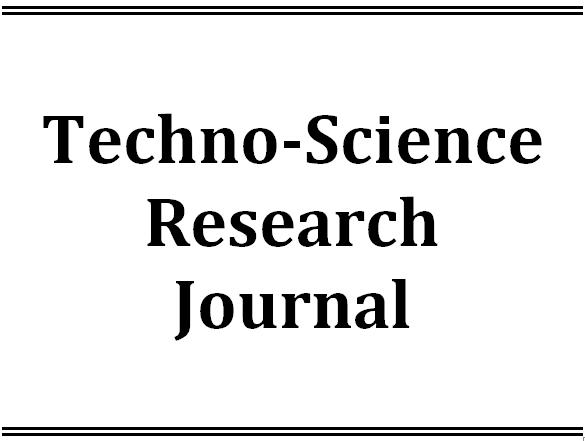Latest Issue
Empowering Education with Online Khmer Handwritten Text Recognition for Teaching and Learning Assistance
Published: August 30,2025Undergraduate Student Dropout Prediction with Class Balancing Techniques
Published: August 30,2025Status of Seawater Quality at Koh Rong Island, Sihanoukville, Cambodia
Published: August 30,2025Low-Complexity Detection of Primary Synchronization Signal for 5G New Radio Terrestrial Cellular System
Published: August 30,2025Word Spotting on Khmer Printed Documents
Published: August 30,2025Tuning Hyperparameters Learning Rate and Gamma in Gym Environment Inverted Pendulum
Published: August 30,2025Examining Passenger Loyalty in Phnom Penh Public Bus System: A Structural Equation Modelling Approach
Published: August 30,2025Prediction on Load model for future load profile of Electric Vehicle charging demand in Phnom Penh
Published: August 30,2025Economic Study on Integrating PV-DG with Grid-Tie: Case Study in Cambodia
Published: August 30,2025Assessment of Pesticide Residues in Surface Water, Sediment, and Fish from Chhnok Tru, Kampong Chhnang
-
1. ITC
Academic Editor:
Received: January 22,2024 / Revised: / Accepted: January 22,2024 / Available online: June 01,2020
Tonle Sap lake has been the largest fresh water lake in Southeast Asia, providing a fundamental environment for nurturing more than three million people in the five surrounding provinces, which about 90% lived from the fishery or agriculture. However, the ecosystem and populations living around the lake have experienced environmental pressure, since the lake water, fishes, living organisms are polluted. More than that, sediment is the type of soil which provides beneficial nutrients, and it also has been polluted by discharge of untreated pesticide residues from the agriculture actions. This current study aims to identify the presence of 451 pesticide compounds and quantify the concentration of 23 targeted pesticide residues in sediment at Chhnok Trou community of the Tonle Sap Lake. Furthermore, pesticide residues were extracted by Solid-Phase Extraction (SPE) method and detected by Gas Chromatography-Mass Spectrometry (GC-MS). Different cartridges (C18 and PLS3-AC2) and different ratio of elution solvents were tested to validate the extraction method before the actual sample analysis. The recovery yield of combination of amino and activated carbon cartridges using mixture of methanol (MeOH)/dichloromethane (DCM) 10/90 (v/v) for elution step was higher than those of another two conditions of MeOH/DCM: 5/95 and 50/50 (v/v). For the recovery rate of silica cartridge, using mixture of acetic acid/acetonitrile of 1/99 (v/v) for elution step gave higher recovery rate than those of another two mixing conditions of acetic acid/acetonitrile: 3/97 and 5/95 (v/v). In this study, combination of amino and activated carbon cartridges and 10/90 (v/v) of methanol/dichloromethane as a mixture solvent for elution step were used for pesticide extraction and clean-up for sediment samples. As a result, four pesticide residue compounds were presented in sediment samples; whereas, none of targeted compounds were quantitatively detected. Qualitatively, chlorfenapyr, insecticide and acaricide were found in sample JS2, fluquinconazole and fungicide in JS5, mevinphos and insecticide in JS3, while oxabetrinil and herbicide safener were found in JS4 and JS6.

